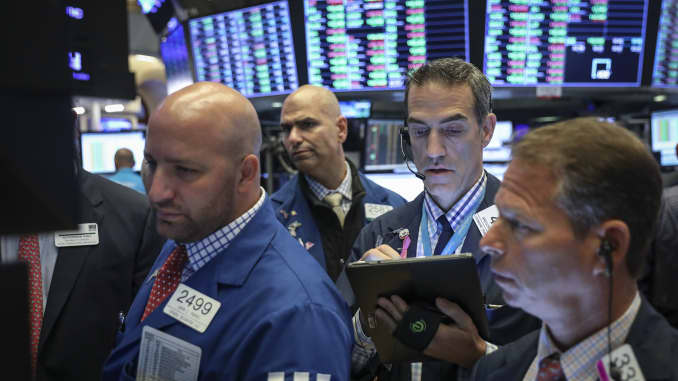The Dow Jones Industrial Average closed 343 points lower, or 1.3% after rallying more than 100 points earlier in the day. The S&P 500 slid 1.2%. The Nasdaq Composite was down 1.1%.
Shares of manufacturers such as Honeywell, 3M and Eaton rolled over on the data release, with each losing at least 2.8% lower.
President Donald Trump blamed the a strong dollar and high interest rates for the weakness in U.S. manufacturing. In a tweet, he said the Federal Reserve and Chairman Jerome Powell were “pathetic” in their handling of the economy.
" As I predicted, Jay Powell and the Federal Reserve have allowed the Dollar to get so strong, especially relative to ALL other currencies, that our manufacturers are being negatively affected. Fed Rate too high. They are their own worst enemies, they don’t have a clue. Pathetic! "
ISM Chair Timothy Fiore pointed to trade weighing on manufacturing in a statement.

U.S. and Chinese negotiators are expected to meet next week in Washington to discuss a potential trade deal between the world’s largest economies. The two sides have slapped tariffs on billions of dollars worth of each other’s goods.
However, sentiment around those talks improved recently. A spokeswoman for the U.S. Treasury said the White House “is not contemplating blocking Chinese companies from listing shares on U.S. stock exchanges at this time.”
Treasury yields reversed earlier gains as investors dumped equities in favor of the traditionally safer U.S. bonds. The 10-year yield was down at 1.64% after rising to around 1.75%. The 2-year rate dropped to 1.54% from about 1.68%. Yields around the world initially rose after an sovereign debt auction in Japan saw weak demand.
“The volatility you’re seeing is reflective of the fact that the themes affecting the market are pretty broad based and they’re global and they’re changing day to day,” said Gregory Faranello, head of U.S. rates at AmeriVet Securities. “You’ve got news coming out of Washington, auctions coming out of Japan ... The market is going to have to adapt day to day to these themes.”
Investors entered the fourth quarter with the major averages struggling to reach record highs set earlier in the year. The indexes were within striking distance of their all-time highs for most of September, but Tuesday’s losses pushed them further away from those levels.
“Historically, the fourth quarter has tended to be one of the best periods for stocks,” said Keith Lerner, chief market strategist at SunTrust Private Wealth, in a note. “We could certainly see another setback before year end. There have only been two pullbacks of more than 5% for the S&P 500 this year versus an average of about three historically.”
“However, unless we see a sharp escalation in trade tensions, we do not anticipate anything in the magnitude of the 2018 selloff,” Lerner said.
In corporate news, Charles Schwab shares dropped nearly 10% after the brokerage said it’s ending commissions on stock trading. TD Ameritrade plunged more than 20% on the news while E-Trade slid 16.4%.
